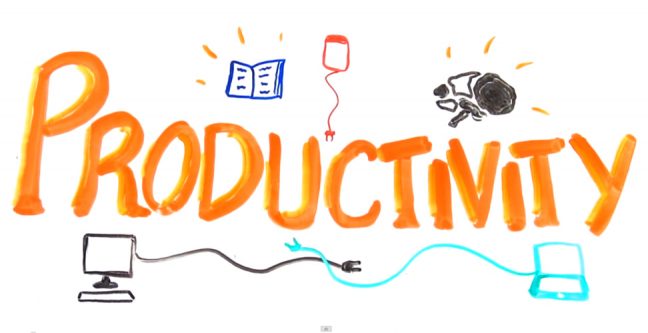The best thing about Laura Vanderkam’s productivity advice is that it doesn’t involve any major life overhauls.
In fact, it’s mostly about changing the way you think about time, and about realizing that you do have the capacity to fit in all your personal and professional priorities.
Vanderkam, who is the author of multiple books including, most recently, “I Know How She Does It,” stopped by the Business Insider office in October to talk all things time-management.
Below, I’ve highlighted seven tips on making the most of the hours available to you that really resonated with me.
1. Be realistic about how much you’re working

Vanderkam suggests using the “X – 25” rule to figure out how much your supposedly super-busy friends are really working. If they say they log more than 75 hours a week, subtract at least 25 hours from that number. You can do the same when estimating your own work hours.
It’s not that you or your friends are deliberately trying to seem busier than you really are. Vanderkam said it’s more that, when you estimate your work hours, you’ve got in mind an image of a perfect day, when you really did log 12 or so hours straight. Most days, however, aren’t like this. You show up late; you go out for lunch with friends; you leave early to make a kid’s school play.
The important takeaway here, Vanderkam said, is that a “44-hour workweek, or even a 54-hour workweek, can make for a reasonable life.” You likely have more time for yourself and your family than you might think.
2. Start your day with a ‘power hour’ for maximum productivity
Vanderkam suggested scheduling a “power hour” first thing every morning, when you work on a top-priority task — and nothing else. It’s a time for what Vanderkam calls “real work,” or those bigger projects and tasks that help you achieve your goals and your organization’s.
If you instead start weeding through your inbox, you could find yourself still there four hours later.
A “pro-level” version of this strategy, Vanderkam said, is dedicating all of Monday morning to a bigger task that’s more speculative and requires some deep thought.

3. Stop trying to empty your inbox
And about that inbox — stop trying to empty it. For one thing, Vanderkam said, if you treat your inbox like a to-do list, you’re essentially letting other people’s demands control your day. It’s also important to realize that most of what’s in your inbox isn’t urgent or even that important.
“There is no correlation between having an empty inbox and being successful,” Vanderkam said. In fact, part of being successful may be learning to prioritize the people and responsibilities in your life. The time you spend trying to hit inbox zero might be better spent doing the “real work” mentioned above.
4. Consider working on weekends to reduce stress
There’s no reason why weekends should have to be sacred. In fact, Vanderkam said weekends can be a great time to think deeply and work on more speculative tasks, because your coworkers probably won’t be online and distracting you.
What’s more, when you spend a few hours Saturday morning and Sunday evening working, you might be able to leave a little earlier during the week — which may be especially important if you’ve got young kids to take care of.
reading a book on the couch
Set a priority for every weekday evening, such as reading part of a book.Eden, Janine and Jim/Flickr
 5. Schedule your free time to be happier
5. Schedule your free time to be happier
Vanderkam noticed that while we typically spend time outlining professional goals and planning our workweeks, we don’t approach our leisure time with the same mindfulness. That can result in feeling like you’ve wasted your precious free time — or in feeling like you don’t have any free time at all.
She suggested thinking, “What do I want to accomplish that’s meaningful for me and the people I care about?” and setting one priority for every weekday evening, such as reading a chapter of a novel or calling a friend.
6. Take time on Friday afternoons to plan the week ahead
Most of us are already checked out by the time Friday afternoon rolls around. So instead of forcing yourself to work on a big project during this time, Vanderkam recommends planning for the week ahead. Specifically, you’ll want to make a three-category priority list, with slots for work, relationships, and self.
Put two to three items in each category, then look over your calendar for the following week, and see where you can fit them in.
7. Think of your life in 168-hour chunks
In “I Know How She Does It,” Vanderkam warns against falling into the “24-Hour Trap.” In other words, don’t think that the only way to achieve balance is to fit all your personal and professional priorities into a single day.
Instead, Vanderkam suggests embracing the “168-hour option,” meaning you see every hour of the week as usable time — including the weekends (see No. 4).
Vanderkam told me that some of the most successful women she spoke to thought of their lives in these 168-hour chunks. For example, one woman traveled half the week, so she figured she might as well use that time to work crazy hours. When she was home, however, she spent less time on work and more time on her relationship- and self-oriented priorities.
Thanks to Business Insider for this great article.







